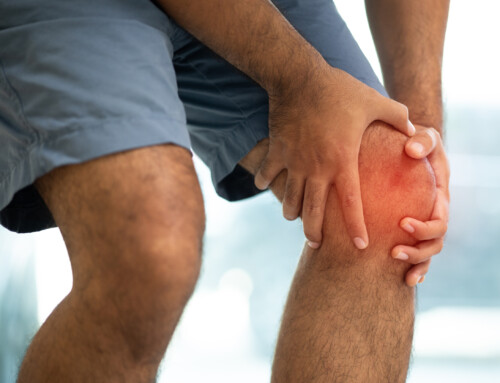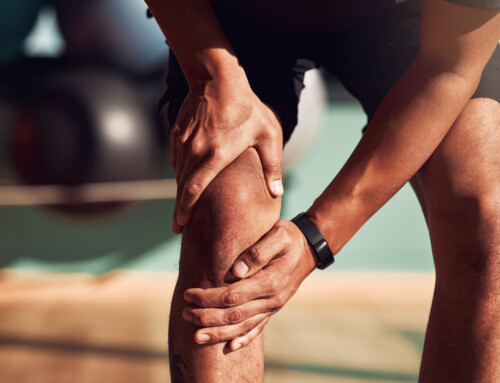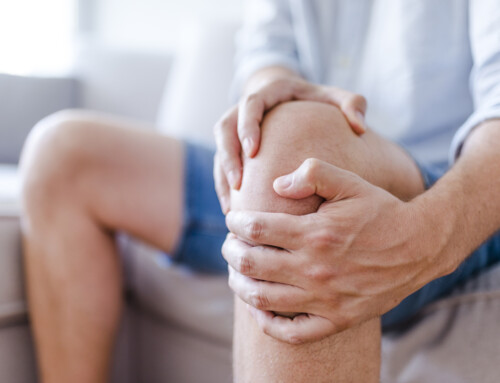Runner’s knee, or patellofemoral pain syndrome (PFPS), is a common condition that causes pain at the front of the knee. It frequently occurs in runners, but can also affect anyone who engages in repetitive movements or has an imbalance in their muscle strength or flexibility. Physical therapy plays a critical role in treating runner’s knee because it addresses the underlying cause, reducing pain, improving mobility, and ensuring a complete and long-lasting recovery.
What is Runner’s Knee?
Runner’s knee occurs when the soft tissues around your kneecap (patella) become irritated and inflamed. This inflammation and pain are usually caused by a combination of overuse, direct trauma, and abnormal kneecap movement. The most common cause of abnormal kneecap movement is weakness in the thigh and hip muscles, inadequate flexibility, poor walking, running or training techniques, and improper footwear.
Runner’s Knee Symptoms
The most common symptoms of runner’s knee are pain during or after activity, and pain or stiffness in the knee after sitting or standing for a prolonged period. Some people notice a grinding or popping sensation under the kneecap, and the area around the kneecap may be tender to the touch. The pain can range from mild to severe and is usually a dull achy pain, rather than sharp.
- Dull, aching pain in the front of the knee, around the kneecap
- Pain that worsens with activities that involve bending or straightening the knee, such as running, walking downhill, or going up and down stairs
- Clicking, rubbing or grinding sensation in the knee
- Stiffness in the knee, especially after sitting or standing for prolonged periods
- Tenderness to the touch around the kneecap
- Swelling that appears after exercise
Initial Treatment for Runner’s Knee
The initial treatment for runner’s knee focuses on reducing pain and inflammation. Your doctor or physical therapist will advise you to take a break from the activities that are causing the pain, and to use ice and nonsteroidal anti-inflammatory drugs (NSAIDs) to control pain and swelling.
- Rest – Try to avoid activities that make your pain worse, such as running, jumping, squatting, lunging, or sitting and standing for long periods of time.
- Ice – Apply ice to your knee for 15-20 minutes several times a day to reduce pain and swelling.
- Compression – Use an ace bandage, knee sleeve or brace to provide extra support.
- Elevation – Use a pillow to raise your knee when sitting or lying down to help reduce swelling.
- Medication – Take an over-the-counter anti-inflammatory medicine, such as ibuprofen or naproxen.
Physical Therapy’s Role in Treating Runner’s Knee
Although the RICE method (Rest, Ice, Compression, Elevation) is a helpful initial treatment for runner’s knee, it is not a complete cure. Because runner’s knee is often caused by overuse or muscle imbalances, identifying and addressing these underlying issues with a physical therapist, is crucial for a complete and long-lasting recovery.
Your physical therapist will review your history and perform a physical evaluation to determine the underlying cause of your knee pain. We then develop a personalized treatment plan, which typically includes a combination of exercise, manual therapy, and movement/gait training.
- Manual Therapy – Manual therapy for runner’s knee may include joint mobilizations to improve joint motion, soft tissue mobilizations to release muscle tightness, and manual stretching to increase flexibility. Dry needling or electrical stimulation may also be used.
- Strengthening & Stretching Exercises – Runner’s knee exercises typically involve strengthening the quadriceps, hip and core muscles to stabilize and reduce strain on the knee, and hamstring and calf stretches to prevent tightness that can be causing misalignment.
- Movement & Gait Training – To prevent runner’s knee from returning, your physical therapist may recommend movement modifications to lessen stress on the knee joint or postural adjustments to protect the knee during running and working out.
Our physical therapists may also provide instruction on knee taping or bracing, and include education on proper shoe selection to reduce the risk of future injuries.
Runner’s Knee Physical Therapy in Saratoga, Malta & Queensbury
With the right treatment plan, most individuals can return to their normal activities, pain-free, within a few weeks. If you are struggling with runner’s knee, contact the experienced physical therapists at Capital Area PT. We’ll work with you to determine the underlying cause of your knee pain and develop a personalized treatment plan for your recovery.
To make an appointment for runner’s knee physical therapy in in Malta, Saratoga Springs or Queensbury NY, give us a call at (518) 289-5242.





